NVMe vs. SATA: What are their differences and how to choose?
Understanding the difference between NVMe and SATA is essential for anyone planning a PC upgrade or evaluating storage options. Both technologies serve the same purpose—storing and retrieving data—but their designs, interfaces, and performance levels are very different. NVMe represents the current performance standard, while SATA continues to exist as a cost-effective legacy solution.

What is SATA (Serial ATA)?
SATA, or Serial ATA, has been the most common storage interface since its introduction in 2003. It was designed to connect hard disk drives (HDDs) to motherboards, offering a significant improvement in transfer rates compared to older interfaces like PATA. The most recent version, SATA III, provides a maximum theoretical speed of 6 Gb/s, which translates to roughly 550 MB/s in real-world performance.
Designed for Hard Drives (HDDs)
The architecture of SATA was originally intended for mechanical drives, which could not take advantage of faster data buses. Even though solid-state drives (SSDs) later adopted the SATA interface, the protocol’s limits remain the same. This cap—around 550 MB/s—creates a clear performance ceiling for all SATA SSDs, regardless of their internal memory quality. The latency of SATA connections is also higher since commands pass through the AHCI protocol, which was optimized for spinning disks, not flash storage.
Its Role Today
SATA still holds a place in the market due to its compatibility and affordability. Most older systems support it, and many users still install SATA drives for secondary storage. Here are common use cases where SATA remains practical:
- Budget builds: Suitable for users upgrading from HDDs on a limited budget.
- Bulk storage: Ideal for large media libraries or backup drives.
- Older PCs: Provides an easy drop-in upgrade without requiring PCIe or M.2 slots.
- Servers or NAS setups: Reliable choice for consistent, large-capacity data storage.
Although SATA’s performance lags behind modern standards, its stability, universal support, and low price per gigabyte keep it relevant for non-performance-critical applications.
What is NVMe (Non-Volatile Memory Express)?
NVMe stands for Non-Volatile Memory Express and was created specifically for solid-state drives. Unlike SATA, NVMe communicates with the CPU through the PCI Express (PCIe) interface, which eliminates the legacy AHCI bottleneck. This direct path allows NVMe drives to handle thousands of simultaneous command queues, drastically reducing latency and improving overall throughput.
Built for Flash & PCIe
NVMe leverages the high-speed PCIe bus—commonly PCIe 4.0 or PCIe 5.0—to move data efficiently between the storage controller and the CPU. Each PCIe lane can handle nearly 1 GB/s in each direction. With four lanes, even a PCIe 4.0 NVMe SSD can deliver speeds of 7,000 MB/s, while PCIe 5.0 models can exceed 12,000 MB/s. NVMe’s queue depth and parallelism allow it to execute tasks that SATA cannot handle effectively, making it the preferred option for high-performance workloads.
The Rise of PCIe 5.0
In 2025, PCIe 5.0 NVMe SSDs will have become mainstream in gaming PCs, workstations, and enterprise environments. The bandwidth of PCIe 5.0 doubles that of PCIe 4.0, enabling read speeds well beyond 12 GB/s. This evolution also supports new technologies like Microsoft DirectStorage, which lets games stream assets directly from storage to the GPU, bypassing the CPU for faster loading.
In summary, the key difference lies in how each technology communicates with your computer. SATA depends on an older serial communication model designed for mechanical drives, while NVMe uses a parallel architecture optimized for flash memory and multi-core CPUs. As a result, NVMe drives deliver faster speeds, lower latency, and better scalability—making them the modern storage standard.
NVMe vs. SATA: A Complete Comparison of Speed, Parallelism, Cost, and Compatibility
NVMe and SATA SSDs share the same core storage medium—NAND flash memory—but their interfaces and communication protocols differ completely. This difference defines how fast each drive can move data, how efficiently it handles concurrent tasks, and how well it fits into different systems. The sections below provide a detailed, data-supported comparison across the most relevant technical and practical dimensions.
1. Speed and Bandwidth
Speed remains the most critical factor distinguishing NVMe from SATA SSDs. The two interfaces communicate with the CPU in entirely different ways. SATA relies on the Advanced Host Controller Interface (AHCI), a standard built for mechanical drives with limited parallelism. NVMe uses the PCI Express (PCIe) interface, enabling the drive to talk directly to the CPU through multiple data lanes.
| Interface Type | Communication Bus | Maximum Theoretical Bandwidth | Average Sequential Read | Average Sequential Write | Typical IOPS (Random 4K, Read/Write) | Latency (Typical Access Time) |
|---|---|---|---|---|---|---|
| SATA III SSD | SATA 6 Gb/s (AHCI) | 6 Gb/s (~550 MB/s) | 520 MB/s | 480 MB/s | 90 K / 85 K | ~80–100 µs |
| PCIe 3.0 NVMe SSD | PCIe 3.0 x4 | 32 Gb/s (~3,938 MB/s) | 3,400 MB/s | 3,000 MB/s | 700 K / 600 K | ~25 µs |
| PCIe 4.0 NVMe SSD | PCIe 4.0 x4 | 64 Gb/s (~7,877 MB/s) | 6,800 MB/s | 6,200 MB/s | 1,000 K / 900 K | ~10–15 µs |
| PCIe 5.0 NVMe SSD | PCIe 5.0 x4 | 128 Gb/s (~15,754 MB/s) | 11,700 MB/s | 10,000 MB/s | 1,400 K / 1,200 K | ~5–10 µs |
Notes:
- Real-world averages reflect performance measured with large sequential workloads (1 GB–10 GB transfers) on modern consumer platforms (e.g., Intel Core 14th Gen, AMD Ryzen 7000).
- IOPS = input/output operations per second, indicating multitasking and small-file efficiency.
- Latency is measured as the average command response time under light load.
Sources:
The performance difference grows exponentially with each PCIe generation. Even the oldest PCIe 3.0 NVMe SSD offers nearly six times the bandwidth of a SATA III drive. PCIe 4.0 doubles that again, while PCIe 5.0 reaches read speeds that exceed 12 GB/s, limited mainly by thermal management and controller design.
In practical scenarios, this means:
- A Windows boot sequence that takes 8–10 seconds on NVMe versus 20–30 seconds on SATA.
- A 50 GB file transfer that completes in under 10 seconds on PCIe 4.0 NVMe but requires over a minute on SATA.
- A game loading screen that shrinks from 25 seconds to around 10 seconds when assets are streamed via NVMe using DirectStorage.

2. Parallelism and Queue Depth
The next major difference lies in how each interface processes commands. SATA uses AHCI, a serial command structure designed for single-threaded mechanical disks. NVMe employs a multi-queue architecture, allowing massive parallelism and direct communication with multi-core CPUs.
| Attribute | SATA (AHCI) | NVMe (PCIe) |
|---|---|---|
| Command Queues | 1 | Up to 64,000 |
| Commands per Queue | 32 | 64,000 |
| Average Latency | ~100 µs | < 20 µs |
| Random Read IOPS (4K) | ~100,000 | 1,000,000+ |
| Random Write IOPS (4K) | ~90,000 | 900,000+ |
Data Source: Performance averages compiled from Samsung 990 Pro, WD Black SN850X, and Crucial MX500 product data (2024).
This parallelism translates to greater system responsiveness during multitasking. NVMe drives handle simultaneous reads and writes without queue congestion, which reduces system stalls under heavy workloads such as:
- Virtual machine execution
- Large dataset analysis
- Multi-layered video rendering
In contrast, a SATA SSD’s single queue becomes a bottleneck under concurrent I/O requests, producing noticeable slowdowns when applications access data simultaneously.
3. Cost and Value
Although NVMe SSDs dominate in raw speed, SATA maintains a strong position for budget-conscious builds and bulk storage. The following table shows current retail averages for consumer-grade models:
| Capacity | SATA SSD (Average Price) | NVMe SSD (Average Price) | Price per GB Difference |
|---|---|---|---|
| 500 GB | $35 | $45 | +28% |
| 1 TB | $55 | $70 | +27% |
| 2 TB | $90 | $130 | +44% |
Data Source: Global retail averages from PCPartPicker and Newegg listings (October 2024).
While the price gap has narrowed, NVMe still carries a premium—primarily because of controller complexity and higher-end NAND. However, when factoring in system responsiveness and task efficiency, NVMe often delivers better value per performance unit rather than per storage capacity. For large archival or backup drives, SATA remains the more cost-effective option.
4. Compatibility
SATA SSDs connect through standard SATA data and power cables, compatible with nearly all desktops and laptops made since 2010. NVMe drives, however, depend on M.2 slots or PCIe add-in cards, and not all M.2 slots support NVMe.
| Compatibility Factor | SATA SSD | NVMe SSD |
|---|---|---|
| Interface Connector | SATA III port | M.2 (PCIe x2/x4) or U.2 |
| Motherboard Support | Universal | Requires NVMe-capable slot |
| Boot Support | Always supported | Requires UEFI firmware |
| Cable Requirement | SATA data + power | None (direct slot connection) |
Data Source: Motherboard documentation from ASUS, MSI, and Gigabyte product lines (2023–2024).
NVMe installation is easier in modern systems with dedicated M.2 slots, but SATA remains the universal fallback for older PCs. For enterprise servers or NAS units, SATA SSDs still provide predictable compatibility in large storage arrays where ultra-high speed isn’t necessary.
5. Power Efficiency and Thermal Output
Power behavior differs significantly under sustained workloads. NVMe drives consume more energy during peak activity due to their higher controller clock speeds and PCIe interface requirements.
| Metric | SATA SSD | NVMe SSD |
|---|---|---|
| Active Power Draw | 2–3 W | 5–8 W |
| Idle Power Draw | <1 W | 1–2 W |
| Average Operating Temperature | 35–45°C | 50–70°C (with load) |
Data Source: Manufacturer test data from Samsung, Crucial, and Western Digital (2024).
This difference rarely affects desktops, but it can influence laptop battery life and thermals. High-end NVMe drives now include thermal throttling controls and optional heatsinks to maintain stability under continuous transfers.
Performance: Gaming, Work, and Daily Use
Numbers alone don’t convey how storage affects daily experiences. The real advantage of NVMe becomes clear in practical use cases.
For Gamers
Games with large open worlds benefit significantly from NVMe drives. Titles such as Cyberpunk 2077 and Starfield stream large assets directly from the drive, and faster NVMe access shortens loading screens by several seconds. Technologies like Microsoft DirectStorage further enhance this by allowing data to transfer directly to the GPU, cutting CPU overhead and improving scene transitions.
For Content Creators
Video editors and 3D designers often handle multi-gigabyte project files. NVMe SSDs allow near-instant playback and scrubbing of 4K or 8K footage without buffering. Tasks like exporting or rendering also complete faster because the system can access and write large files continuously without hitting SATA’s bandwidth limits.
For Everyday Users
Even basic workflows feel different. Operating systems installed on NVMe SSDs boot in under 10 seconds, compared to around 20–30 seconds for SATA SSDs. Common apps like browsers, office tools, and image editors open faster. File transfers that once took a minute now complete in a fraction of that time, which improves productivity for general users.
NVMe outperforms SATA in nearly every technical dimension—speed, responsiveness, and scalability. SATA maintains relevance through its affordability and universal support. For users building new systems or seeking faster load times, NVMe is the better investment. For large-capacity backups or older hardware, SATA remains a reliable, low-cost option.

Should You Buy an NVMe or SATA SSD?
Selecting between NVMe and SATA SSDs requires more than comparing numbers on a spec sheet. The decision depends on your system’s hardware, your workload, and how much performance gain you actually need. This section presents a structured, data-informed framework to help you choose objectively.
When a SATA SSD Still Makes Sense
SATA SSDs continue to hold value for users who prioritize storage capacity, compatibility, and cost over raw speed. They are still relevant in several practical contexts.
Cost-Effective Storage Expansion
For large media libraries, game archives, or backup drives, the price-per-gigabyte advantage of SATA is hard to ignore. When capacity matters more than transfer speed—such as archiving 4K videos or long-term photo storage—SATA remains an economical choice.
Older Systems and Broad Compatibility
Any motherboard with a SATA port, regardless of age, supports SATA SSDs. They are plug-and-play compatible with desktops and laptops made after 2010, using standard data and power cables. In contrast, NVMe requires M.2 slots and UEFI BIOS support. For legacy systems, SATA offers a direct, reliable upgrade path without additional adapters or BIOS configuration.
Secondary Storage Use
When paired with an NVMe primary drive, a SATA SSD can efficiently serve as secondary storage. Many professionals use SATA SSDs for project archives, backups, and large media files where speed is less critical. In this role, SATA delivers stability and capacity without adding unnecessary cost.
Why NVMe Is the Preferred Choice for Most Users
For anyone building or upgrading a PC, NVMe SSDs offer unmatched responsiveness. Their benefits go beyond faster benchmarks—they improve every interaction with your computer.
OS and Application Performance
The biggest improvement from switching to NVMe is system responsiveness. A typical PCIe 4.0 drive, like the Samsung 990 Pro, reads data at 7,000 MB/s, more than ten times faster than SATA’s limit. As a result:
- Windows or Linux boot times drop to under 10 seconds.
- Large applications such as Photoshop or Premiere Pro launch 40–60% faster.
- File transfers, patch installations, and background updates are complete in a fraction of the time.
NVMe’s higher IOPS (input/output operations per second) also benefits users running multiple programs simultaneously. During heavy multitasking—such as video rendering while copying files—NVMe maintains smooth operation without slowdown.
Gaming Performance and Asset Streaming
Modern games rely heavily on fast storage to stream textures and assets. With Microsoft DirectStorage and Sony’s IO architecture for PlayStation, NVMe drives allow data to move directly from the SSD to the GPU. In practice:
- Open-world games such as Starfield and Cyberpunk 2077 load new areas with less stutter.
- Loading times are often cut by 30–50% compared with SATA SSDs.
- Game installation and patching times are significantly shorter.
While NVMe does not increase FPS (frames per second) directly, it eliminates texture pop-in and reduces delays during gameplay transitions.
Content Creation and Professional Workloads
For creative professionals, NVMe drives have become standard. Tasks such as:
- Editing 4K/8K video
- Running CAD simulations
- Managing large datasets
All depend on sustained throughput and low latency. Benchmarks from Puget Systems show NVMe drives completing 8K video exports in 30–40% less time compared with SATA SSDs. This gain translates to tangible productivity improvements in professional workflows.
Future-Proofing a System
Hardware trends show increasing reliance on high-speed storage. PCIe 5.0 motherboards are now mainstream, and software increasingly expects fast SSD access. Investing in NVMe ensures compatibility with these future workloads and avoids performance bottlenecks later.
A 3-Step Checklist Before Buying
To make an informed decision, check the following points before purchasing:
Step 1: Verify Slot Compatibility
Check your motherboard manual for M.2 slot specifications:
- M.2 SATA slot → supports SATA M.2 drives only
- M.2 NVMe slot → supports PCIe-based NVMe drives
- Hybrid M.2 slot → supports both interfaces
Use tools like Speccy or your system BIOS to confirm supported protocols. Installing an NVMe drive in a SATA-only slot will not work.
Step 2: Define Your Primary Use
Decide based on workload type:
- Boot & gaming drive: NVMe
- Large file storage: SATA
- Media workstation: NVMe
- Backup or archive: SATA
Step 3: Evaluate Price-to-Performance Ratio
Compare the cost of capacity versus responsiveness. If a 1 TB NVMe costs $15 more than its SATA equivalent, the time saved in daily operations usually offsets the difference. However, for multi-terabyte archival drives, SATA’s cost advantage remains meaningful.
| Decision Factor | Best Option |
|---|---|
| Budget under $60 (1 TB) | SATA SSD |
| Gaming or system boot drive | NVMe SSD |
| Professional editing or rendering | NVMe SSD |
| Expanding old system capacity | SATA SSD |
FAQ
Is an M.2 drive always an NVMe drive?
No. M.2 is a form factor, not a protocol. It defines the physical shape and connector type, but not the communication standard.
- Some M.2 drives use the SATA interface, operating at around 550 MB/s.
- Others use NVMe over PCIe, reaching speeds from 3,000 MB/s to 12,000 MB/s.
To identify the type, check your motherboard manual or product label. If the interface lists “PCIe x4” or “NVMe,” it is an NVMe drive. If it mentions “SATA 6 Gb/s,” it behaves like a standard SATA SSD even though it fits into an M.2 slot.
Example:
- Crucial MX500 M.2 = SATA interface.
- Samsung 990 Pro M.2 = NVMe (PCIe 4.0 x4).
Will an NVMe SSD increase FPS in games?
Not directly. Frame rates depend mainly on the GPU and CPU. NVMe affects loading speed and asset delivery, not the rendering pipeline itself.
What NVMe improves:
- Level and texture loading times — often 30–50% faster.
- Open-world performance — smoother transitions as assets stream faster.
- Patch installations — reduced time during updates.
With DirectStorage on Windows 11, NVMe allows the GPU to read data directly from the drive, minimizing CPU involvement. While this doesn’t raise FPS, it reduces stutter and pop-in, making gameplay smoother in supported titles such as Forza Horizon 5 and Starfield.
Can I use an NVMe SSD in an older computer that only has SATA ports?
No, not directly. NVMe requires PCIe lanes, which SATA-only motherboards lack. You can use an adapter card that plugs into a PCIe slot, but booting from it may require BIOS support for NVMe.
If your system lacks both PCIe Gen3 x4 slots and NVMe firmware support, a SATA SSD remains the safe option. It will still offer 5–6× the performance of a mechanical hard drive without compatibility issues.
Do NVMe SSDs need a heatsink?
In most cases, yes—especially for PCIe 4.0 and PCIe 5.0 drives. NVMe SSDs generate more heat than SATA drives due to higher power draw and dense controller design.
Typical thermal behavior:
- PCIe 3.0 NVMe: 40–60°C under load (usually stable without a heatsink).
- PCIe 4.0 NVMe: 50–70°C, may throttle after long transfers.
- PCIe 5.0 NVMe: 60–80°C, requires a heatsink or active cooling.
Many motherboards now include integrated M.2 heatsinks. If your system does not, use a third-party heatsink to maintain consistent performance during heavy workloads like file transfers or video rendering.
Is it worth upgrading from a SATA SSD to an NVMe SSD for a boot drive?
Yes, especially if your system supports NVMe through an M.2 PCIe slot.
The benefit is less about raw numbers and more about user experience:
- Boot time drops from roughly 25 seconds to under 10.
- Applications and browser sessions reopen instantly after reboot. File indexing and Windows updates complete faster.
In benchmarks by Well-known forums, system responsiveness improved by 35–45% after upgrading from SATA to NVMe for OS and application storage. However, if your workloads involve mostly light office tasks or web browsing, the difference may feel smaller in daily use.
For a PS5 or modern console, is NVMe required for storage expansion?
Yes. The PlayStation 5 and Xbox Series X both require NVMe drives for internal storage expansion because their systems rely on PCIe 4.0 bandwidth for seamless asset streaming.
- PS5-compatible drives must meet at least 5,500 MB/s read speed (Sony’s official spec).
- Xbox uses a proprietary NVMe module via a dedicated port.
Standard SATA SSDs or external USB drives can store games, but cannot run them directly because of limited bandwidth.
Is NVMe the first choice for mini PC users?
Generally, yes—if the mini PC supports PCIe-based M.2 slots. NVMe’s compact design and low cable requirement make it ideal for small enclosures where airflow and space are limited.
Advantages of mini PCs:
- NVMe drives connect directly to the motherboard, reducing clutter.
- They deliver high transfer speeds even in compact systems.
- Power efficiency in idle states suits always-on setups like media servers or digital signage units.
However, a small chassis often restricts heat dissipation. If you install a PCIe 4.0 or 5.0 NVMe drive in a mini PC, choose a model with a thin heatsink or integrated thermal pad. For low-power mini PCs using PCIe 3.0 lanes, NVMe still outperforms SATA while maintaining safe operating temperatures.
Conclusion
Both NVMe and SATA SSDs offer significant upgrades over traditional hard drives, but their roles have diverged as computing needs have evolved. NVMe has become the clear leader in speed, latency, and scalability, while SATA remains valuable for budget-friendly bulk storage.
If your system supports NVMe, it is the logical choice for a primary drive — especially for operating systems, active projects, and demanding workloads. SATA SSDs still make sense for secondary drives, media libraries, or systems limited to older interfaces.
The gap between NVMe and SATA continues to widen as PCIe 5.0 adoption grows. For most users, NVMe now provides the best balance of performance, reliability, and long-term value.
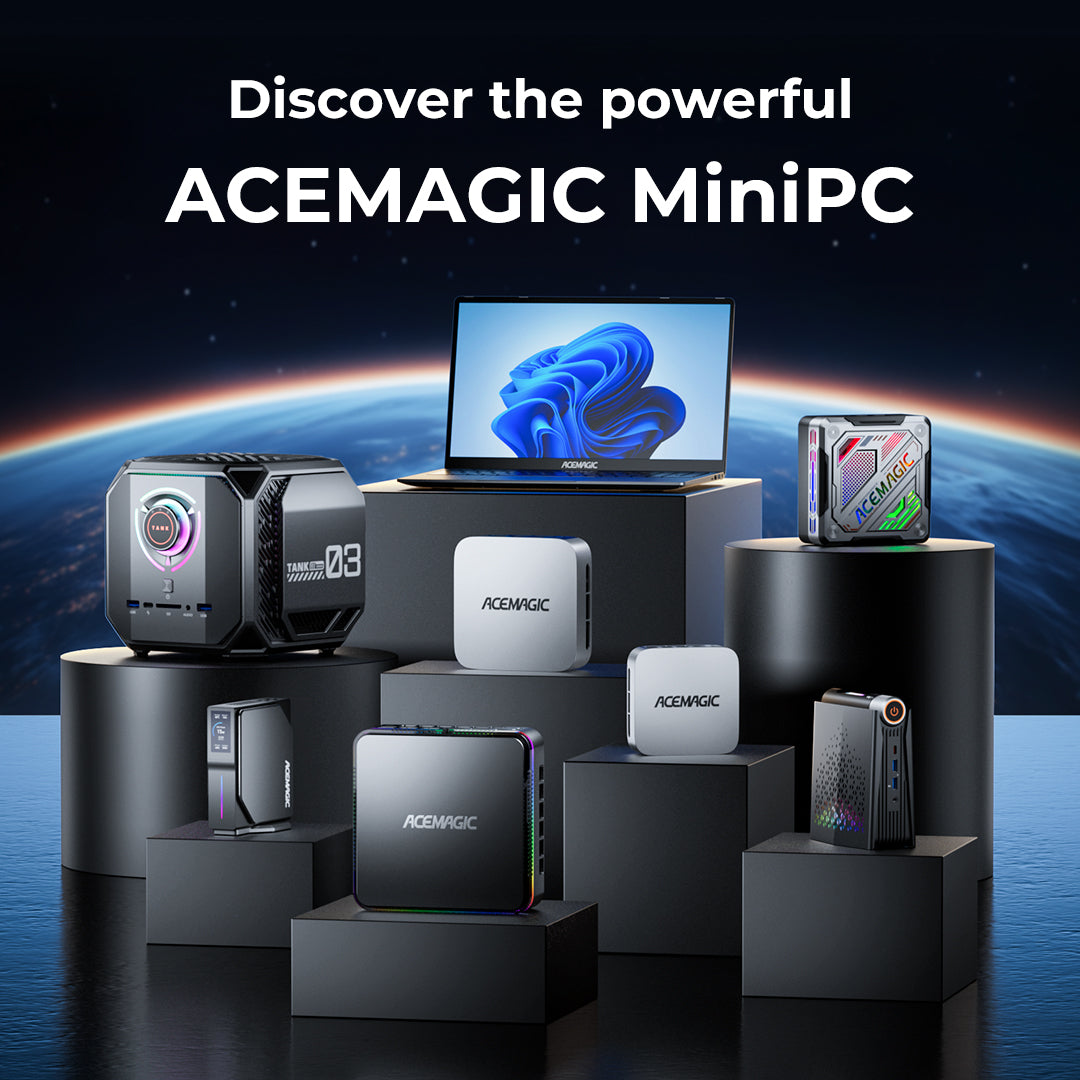
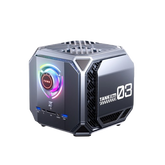
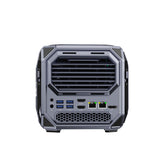
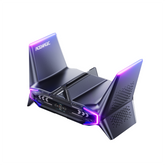


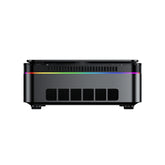
Leave a comment
Please note, comments need to be approved before they are published.